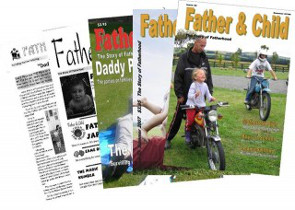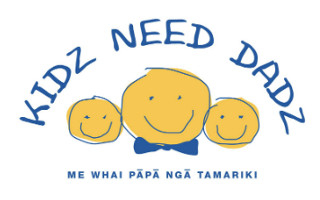Tots And Toddlers
By Steven Wallace
Plunket’s Tots & Toddlers programme brings parents into the classroom to teach sixth formers – boys and girls – the art of babycare.
Steven Wallace was one (of too few) fathers who volunteered – and ended up in tradition-laden Christchurch Boys High.
In July 99 my 1 1/2 year old daughter Sydney and I went along to our first Tots & Toddlers Course at Christchurch Boys High School.
This programme is run throughout New Zealand with around 30 courses in Christchurch alone each year, and is designed to give 6th form students an insight into parenting with basic knowledge of the needs and requirements of young children and babies.
While the aim is to teach the ideal situation to students, the course is designed to give them a realistic view of parenting and how much it varies from parent to parent and child to child.
The hands-on approach is greatly encouraged and the rewards are there for student and child in the way of smiles and enjoyment for both parties. Even though a bit nervous, at first at the thought of being presented as a father role model to these teens, I was ready to face my first day:
WEEK ONE:
After getting over the first nerves of walking back into a classroom for quite a long time, we introduced ourselves and our children, leaving the pupils to guess their ages. The tutor then handed out hens eggs for what reason I wasn’t quite sure at first but thought we will find out, no doubt.
The boys broke up into three groups and parents split up into these groups. Nerves settled down by now as I had only seven guys confronting me. The pupils had a questionnaire to fill out about Sydney – age, height, weight as present and about what Sydney does during bath times and mealtimes.
So far so good, I thought. Then the pupils were asked to fill out a day timeline from when Sydney gets up to when she goes to bed at night. This gave them a pretty good idea of what goes on during the day – that it’s not all “beer and skittles” when it comes to caring for young children.
Afterwards they asked some general questions about the birth, who-1 extra shopping items were required and what extra precautions were needed in general day to day living. That was just about it for the first day.
The final task was to let two of the group come out and buckle Sydney into her car seat while I watched on to make sure this was done how it should be and show the importance of child restraints in cars.
Overall not as nerve-racking as I first anticipated and well worth it as well.
Phew!
We drove off looking forward to week two… Bath-time.
WEEK TWO:
We started off with a general rundown of today’s programme, then the class broke up into four groups to bath the children. The tutor and I thought not to involve Sydney in this as she is at the age of being quite shy and even with my assistance she would probably not let the boys bath her in a baby bath.
The pupils filled the baths with the right temperature water, testing it with their wrists. But they appeared quite worried of hurting or upsetting the babies. Sydney and I wandered around observing the different ways the boys bathed the children, as all were different ages.
Some children enjoyed bath-time but one of the smaller babies didn’t, no matter what the parent did. Overall the babies, parents and pupils came out unscathed.
On dressing the babies, the tutor, myself and a couple of parents (mainly dads actually) discussed the new velcro tab “Huggies” nappies. Everyone thought they were so much easier to use, and that it probably won’t be long before the design was copied by others.
During this discussion some of the boys tried to entertain Sydney -but she didn’t want anything to do with them. Pupils asked questions on bathing, on how bathing babies was different to toddlers and techniques and tasks involved.
Today’s session was quite short and easy for us but we still were able to help out the boys in our own ways. Once again two boys came out and put Sydney into her car seat.
WEEK THREE:
Today started like the other sessions with a quick discussion on what we would do today. The pupils then broke up into groups, one went off with a bucket of playdough, another with a train set and the remainder joined the children and parents on the floor with the toys they had brought along.
At this stage Sydney had not long woken-up and was finishing off her lunch in class, so it would be interesting to see if the boys could get Sydney playing with her toys.
But while the younger and older children played along with the boys, Sydney was another story. The first group had a lot of trouble with her due to no fault of their own, but they kept on trying regardless.
On the second rotation of boys, she showed signs of willingness to play. She made moves to the ball which they threw to her.
But by the time the third group had arrived there was no stopping her.
She was playing really well and the guys had done an excellent job to get her this far. But with all good things it was time to stop. We found this session was quite good for the younger and older children as they enjoyed the pupils playing with them, and Sydney even though being cautious at first eventually joined in as well.
WEEK FOUR:
Unfortunately, due to circumstances beyond our control (inter-school rugby) we didn’t attend the session on feeding. According to the tutor this is about feeding babies and introducing solids, and parents are asked to share their views and experiences on this.
They bring some food along to demonstrate what sort of things children are eating (or should be eating) at this stage.
In overview, I found this an excellent programme in which the pupils got involved in all aspects of child raising. Brief though as it was, it gave them some insight into raising children. I look forward to volunteering Sydney and myself again, maybe to an all girls school or a co-ed.
The tutor and pupils also cover cot-death and rest-time as well as other topics during the course but parents and babies are not at these sessions.
Next: Biological Fathers




